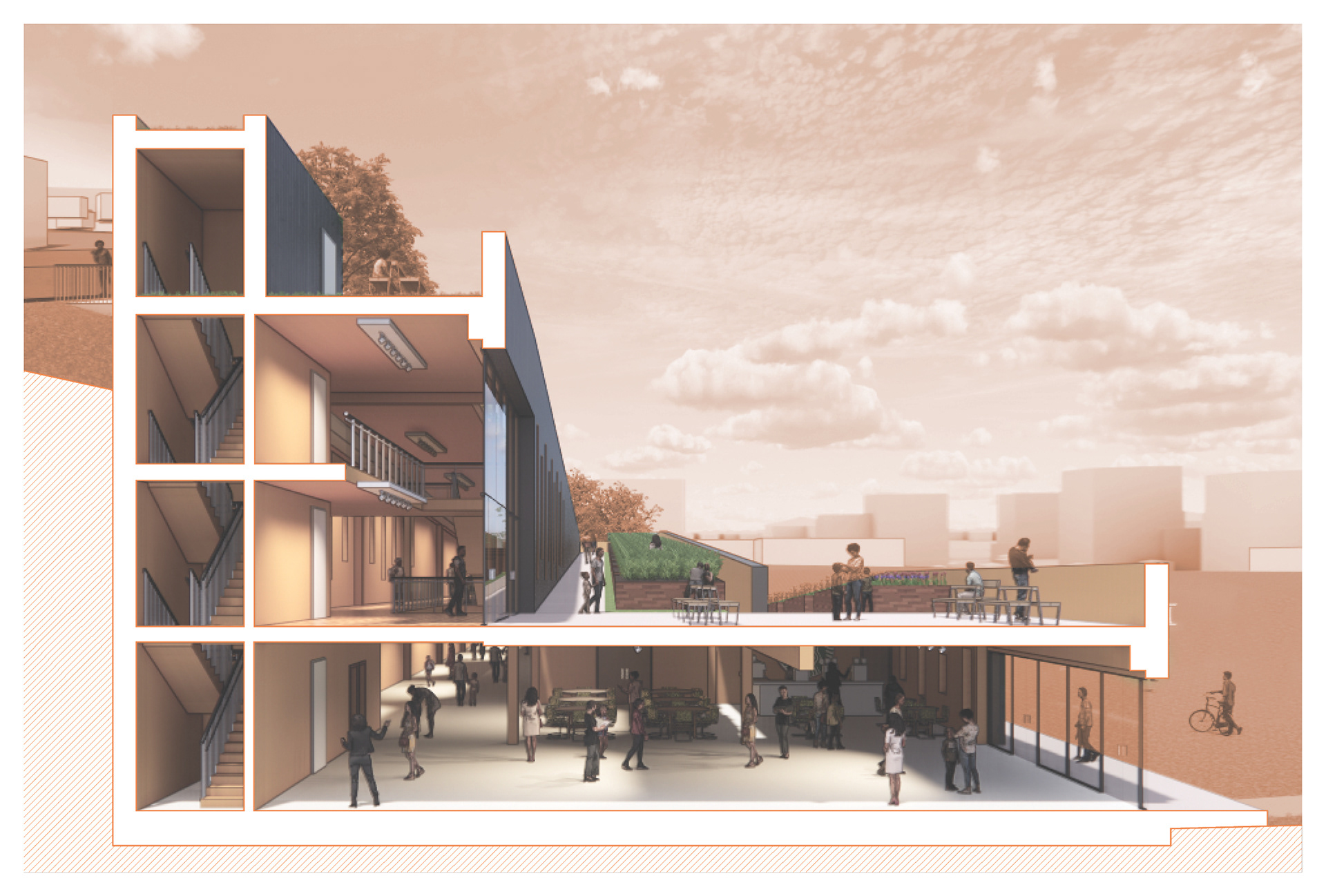Team —
Susan Fitzgerald, Abby Brown, Normann Baumann, Marcel Correa, Stavros Kondeas, Rin Milos
Description —
Food is fundamental to life. Historically this located cities adjacent to fertile land for their survival and as a result, food, in both production and consumption, has influenced the landscapes of many urban areas. This is evident in the arrangement of lot sizes and land patterns and historic street and neighborhood names. While the presence of food and its production is inescapable in some places, it is completely absent and sanitized in others. In some parts of the world food is highly visceral—fresh food and animals are brought into the markets of the city where food is stored, distributed, processed, sold, and consumed. In other places, food is purchased from within sterile warehouse grocery stores where the packaging and presentation of the food conveys nothing about the processes of production. Such spaces are designed for efficiency and commodification rather than encouraging any knowledge transfer about where the food came from, how to use or cook with it (Steel 2008).
The three projects in this proposal improve biodiversity, stormwater management, food security and sovereignty, while providing free public space within the city that reconnects the community to the food production process. The following work reintroduces food into the heart of the city and forms linkages between the citizens and urban ecosystems to help create a sustainable city and community.
Abby Brown, The Mosaic: reconnects contaminated sites back into the city. Within its modular system it simultaneously heals the soil while providing affordable housing, space to grow food, and public amenity. This building connects growing to caring—both for the community and for the earth.
Normann Baumann, The Honeybee Centre educates people on the importance of urban bee farming. Located adjacent to three schools in the heart of the city it gives students and community members an opportunity to learn about beekeeping and the role that bees play in sustaining a healthy ecosystem. The building is part of a park and through its sloped roofs creates a pedestrian promenade that links the park to the city and production to education. The zigzagging pattern is reminiscent of the "waggle" dance that enable bees to communicate to each other the location of a good source of nectar or pollen. This didactic architecture provides opportunities for students to connect with nature, learn about the process of honey creation, and participate in the production of local food.
Marcel Correa, The Socio-Agri-Cultural project introduces food cultivation and art into the city. A network of stairways, walkways, pedways, and elevators provide access to the city’s underused rooftops that are re-purposed to support food production and public art. This network creates alternative vegetated routes through the city while providing green spaces, access to healthy food, and space for community activities.






